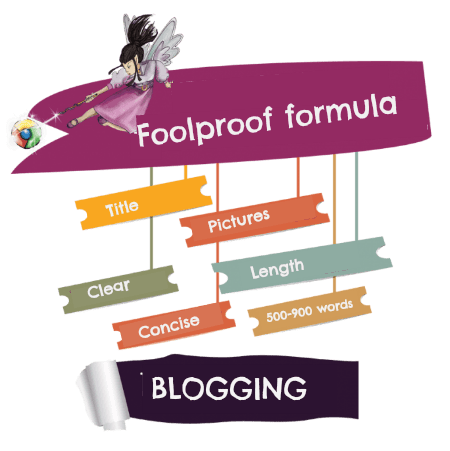Blogging is an essential part of your SEO arsenal. However, merely writing an article is not enough so we have put together the foolproof formula for newbie’s to SEO blogging. Following a few guidelines will help make your blog both interesting to readers whilst also ensuring it’s search engine friendly.
- Think about the article title
The blog title is very important in terms of SEO. Think about what a reader might search for in order to  find your business. Making it as specific as possible to garner better results. As food is such a hot topic at the moment, let’s use it as an example. If you want to write about healthy food tips for children, you could consider a title like “10 Recipes for quick & healthy dinners Your toddlers will love”. Titles that perform well in search have “how”, “who” in them. Incidentally “who” generates 22% more click throughs than “how. The use of alliteration also helps, as in our title here “foolproof formula”. Ensure your key phrase is at the beginning of the title where possible. You can research top performing key words and phrases by using Google Adwords Keyword Tool.
find your business. Making it as specific as possible to garner better results. As food is such a hot topic at the moment, let’s use it as an example. If you want to write about healthy food tips for children, you could consider a title like “10 Recipes for quick & healthy dinners Your toddlers will love”. Titles that perform well in search have “how”, “who” in them. Incidentally “who” generates 22% more click throughs than “how. The use of alliteration also helps, as in our title here “foolproof formula”. Ensure your key phrase is at the beginning of the title where possible. You can research top performing key words and phrases by using Google Adwords Keyword Tool.
- Be accurate
The searcher is looking for accuracy in the information. Having a clear headline increases interactions by approximately 38%. Up do date content and proof of authority in the topic are crucial to ranking. How can you prove you know what you are talking about? Facts and figures are a great way to prove you are the expert in the field. If you have a podcast on the blog consider adding that to the title so it now reads “podcast containing recipes’ for quick and healthy toddler dinners”. This is an accurate way to describe the blog content, as well as demonstrating that you have something of value to offer your audience.
- Keep the title concise
By keeping the title under 70 characters, will ensure that it doesn’t get cut off in search engine results. You may have seen titles tailing off with a dot, dot, dot look. That occurs when the title is too long, This is also important when sharing across social media. To learn more about what makes readers actually click through, Outbrain, a content discovery platform serving content recommendations on top publisher sites, looked through data on 150,000 article headlines that were recommended across their platform.
- Blog title length matters
The same research discovered that titles with 8 words performed 21% better than average. For sharing on twitter, 120 -130 characters is the sweet spot. This is not always achievable but aim for that.
- Article length matters
Our research has shown that there are various schools of thought on this but all digital marketers agree that longer is better. Until fairly recently we were recommending 400 – 500 words. In the never ending race to get to number 1 in the SERP’s it’s now necessary to increase this to between 500 – 900 words. If this is a scary thought, you might be as well to outsource the blog articles.
- Pictures matter
Thumbnail pictures increased click through rates by 27%, (performing better than logos). The recommended thumbnail size is 150 pixels by 150 pixels square. Remember for those larger pictures throughout the post that less is more. Search engines run checks for page loading speed and the larger the image, the longer it takes to load. However pictures get more click throughs and are a great way to break up the article, so try to aim for 350 – 400 pixels wide max.
SEO is hugely tactical and contains much more than we have mentioned here, but we hope this foolproof formula for blogging is a good start and will help you along your way.




